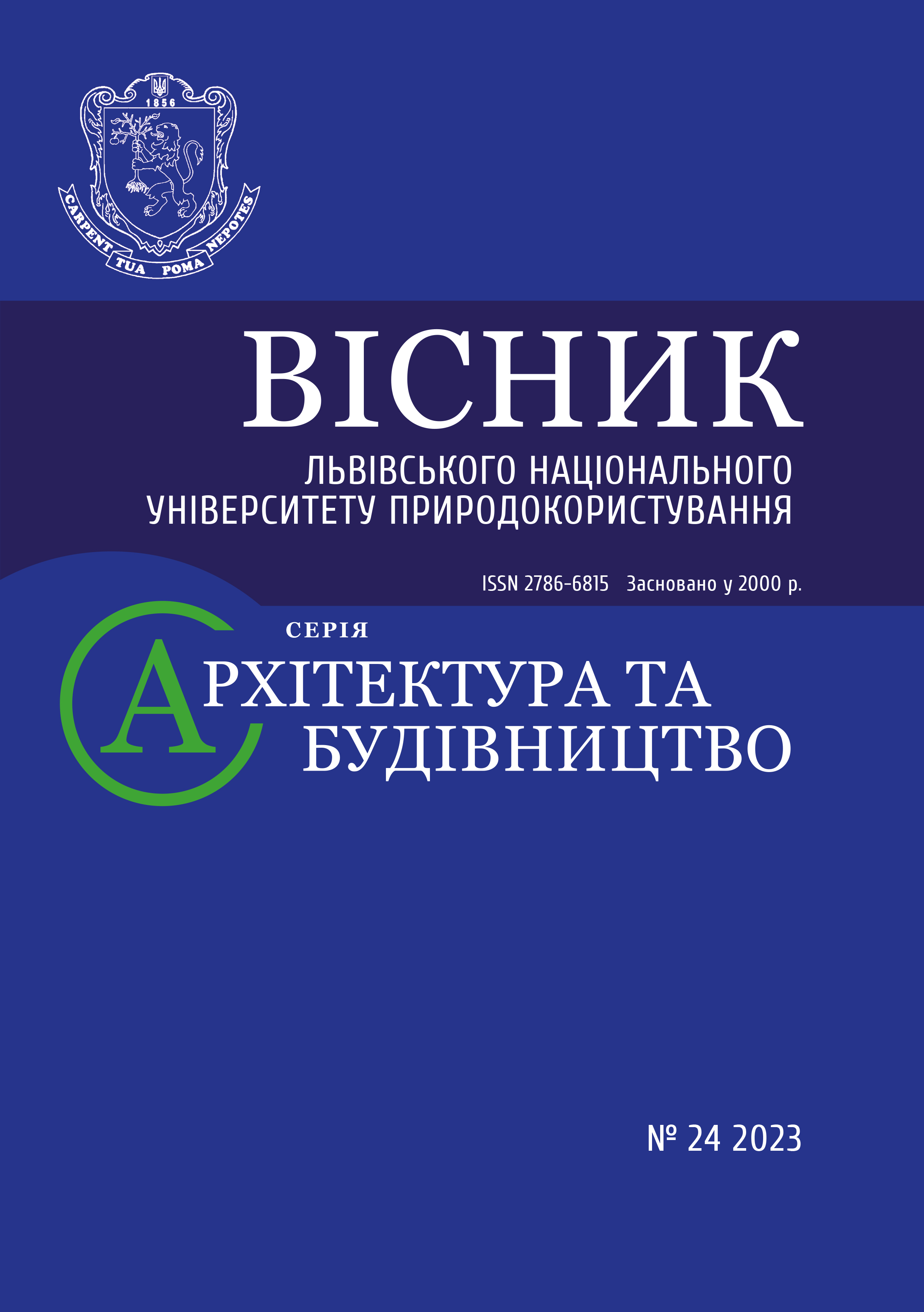MECHANICAL CHARACTERISTICS OF STEEL FIBER CONCRETE REINFORCED WITH FIBER OF NE1050 TYPE UNDER SHORT-TERM COMPRESSION
DOI:
https://doi.org/10.31734/architecture2023.24.065Keywords:
fiber, steel fiber concrete, compression, testing, stress, relative deformation, initial modulus of elasticity, deformation diagramAbstract
The article studies the influence of the coefficient of fiber reinforcement by volume ρ_fv when using steel fiber of the NE1050 type with bent ends of Ukrainian production on the strength and deformability of dispersed-reinforced concrete under short-term compression, and makes proposals for calculating the strength and analytical description of the corresponding deformation diagram.
According to the research program, the strength of fine-grained concrete is assumed to be of C20/25 and C30/35 classes, which are most often used in the structures without prestressing the core reinforcement; the percentages of fiber reinforcement by volume are 0 %, 0.7 %, 1.25 %; 1.8 %, since at lower percentages of fiber reinforcement, its effect may not be observed, and at higher percentages, the structures cease to be competitive. The strength and deformation characteristics of steel fiber concrete were studied on compressed prism specimens of 100 × 100 × 400 mm.
To produce prisms of C20/25 class concrete, the following composition was adopted: M400 cement with an activity of 41.2 MPa – 445 kg, sand with a modulus of 2.1 – 1645 kg, and water – 240 liters. To obtain C30/35 class concrete, the following composition was adopted, particularly M500 cement with an activity of 52.3 MPa – 431 kg, sand with a particle size modulus of 2.1 – 1724 kg, and water – 216 liters. The fiber consumption per 1 m3 was 54.95, 98.13, and 141.3 kg at the percentages of reinforcement of 0.7, 1.25, and 1.8, respectively.
It is shown that an increase in the coefficient of fiber reinforcement by volume contributes to an increase in the strength of steel fiber concrete, relative deformations corresponding to the peak point of the deformation diagram, the initial modulus of elasticity of steel fiber concrete, and a decrease in relative deformations at a specific stress level. The research confirms the expediency of using a modified formula of norms in the form of a fifth-degree polynomial to describe the deformation diagram of steel fiber concrete under short-term compression and determines the coefficients of this polynomial.
References
Bambura A. M. Experimental bases of applied deformation theory of reinforced concrete: PhD thesis: 05.23.01. Kyiv, 2005. 379 p.
Bilozir V. V. Formation and opening of cracks in normal sections of bending steel fiber-reinforced concrete elements on sheet fiber: PhD thesis. Moscow, 1991. 164 p.
DBN V.2.6-98:2009. Concrete and reinforced concrete structures. Main provisions: [effective since July 01, 2011]. Kyiv: Ministry of Regional Development of Ukraine, 2011. 71 p. (State Construction Standards of Ukraine).
DSTU B.2.7-215: 2009. Concrete. Rules for composition selection. To replace GOST 27006-86; effective since September 01, 2010. Kyiv: Ministry of Regional Development of Ukraine, 2010. 14 p.
DSTU B.2.7-217: 2009. Concrete. Methods for determining prismatic strength, elastic modulus and Poisson's ratio. Kyiv: Ministry of Regional Development of Ukraine, 2010. 17 p. (National standard of Ukraine).
DSTU-N B V.2.6-218: 2016 Guidelines for designing and manufacturing the structures made of dispersed reinforced concrete. Kyiv: UkrNDNC SE, 2017. 32 p. [Effective since April 01, 2017].
Dvorkin L. Y., Dvorkin O. L. Design of concrete compositions: monograph. Rivne: NUWGP, 2015. 353 p.
Kinash R., Bilozir V. Deformational calculation method of bearing capacity of fiber-concrete steel bending elements. Czasopismo Techniczne (Technical Transactions: Architecture). 2014. I. 8-A (15). No 111. P. 49–58.
Rabinovich F. N. Dispersedly reinforced concrete. Moscow: Stroyizdat, 1989. 174 p.
Recommendations for designing and manufacturing the steel fiber-reinforced concrete structures. Moscow: NIIZHB Gosstroy USSR, 1987. 148 p.
RILEM TC 162-TDF. Test and design methods for steel fiber reinforced concrete. Materials and Structures. 2003. Vol. 36. Р. 560–567.
SP 360.132580.2017 Steel fiber-reinforced concrete structures. Design rules. Moscow: Standardinform, 2018. 70 p. [Effective since June 12, 2018].
Zhuravskyi O. D. Strength, crack resistance and deformation of reinforced concrete slabs under complex loads: PhD thesis: 05.23.01. Kyiv, 2021. 327 p.


